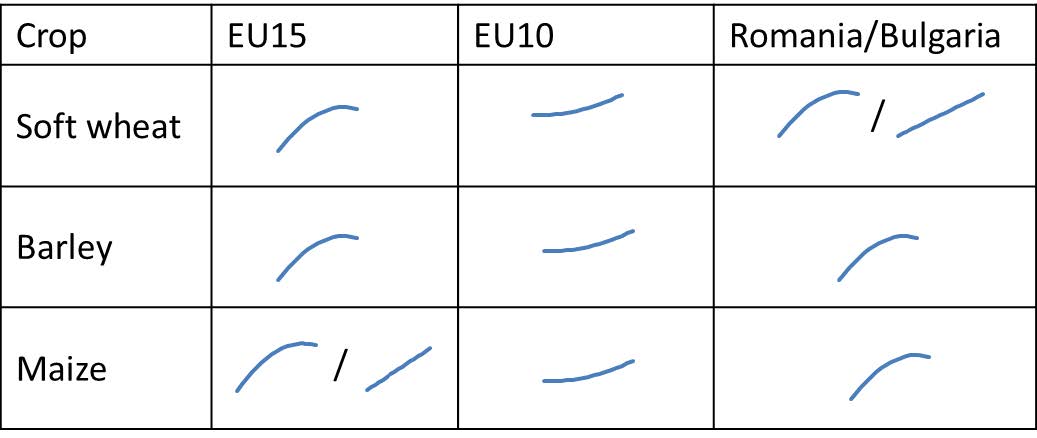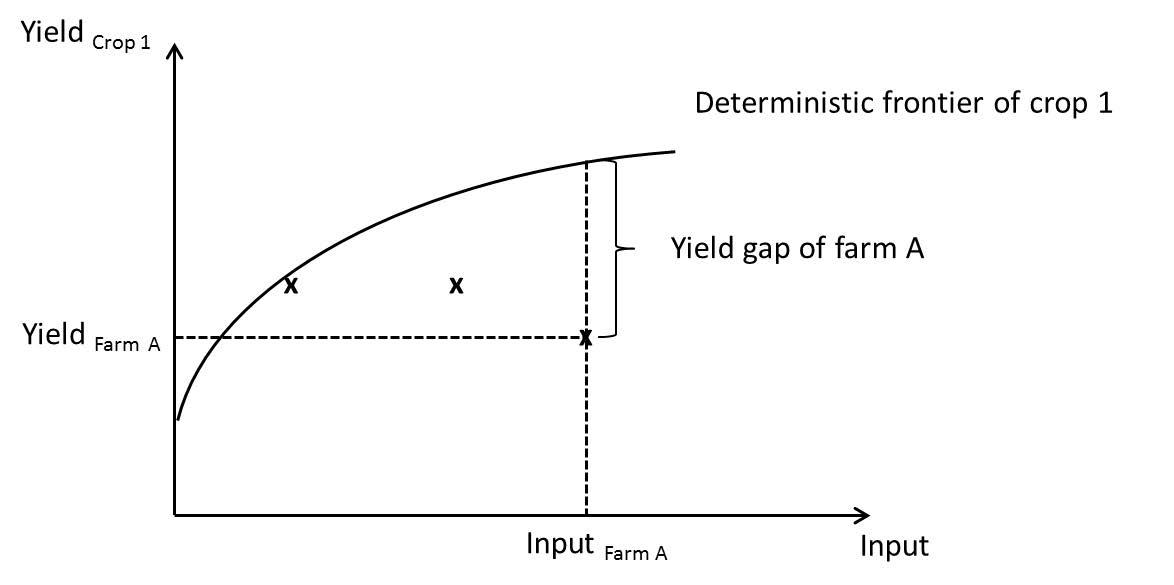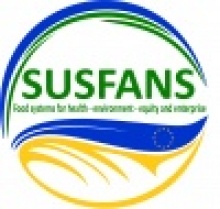The drivers of crop production at regional level in the EU
Crop production is the most crucial primary agricultural production activity for food and nutrition security. In 2011, around 70% of the global calories intake per capita per day derived from plant-based products. Besides its importance for direct human consumption, crop production is also crucial for producing feed for livestock and, increasingly, also for aquaculture. Understanding what drives crop production and the development of crop yields helps projecting future developments that are crucial for food and nutrition security and allows identifying risks and (policy) measures for improvement. A regionally specific analysis enables the identification of regional hot spots and regions with potential for further intensification.
A new report by Andrea Zimmermann and Catharina Latka of the University of Bonn describes and analyses crop production in the EU. Focus is on cereal production with case studies of soybean production in South Europe and fruits and vegetables production in the SUSFANS case study region Italy. The report identifies the main drivers of crop production and analyses the development of crop yield growth and the impacts of climate and [management of crop yields at regional level in the EU.
The identification of indirect and direct drivers of crop production are based on literature review. The researchers analyzed yield trends and yield gaps, the gap between biologically attainable and actually achieved yields empirically. They based their yield trend estimation on a statistical-econometric fixed-effects model. The determinants of frontier yields and the yield gap are estimated using a Stochastic Frontier Analysis (a simplified illustration of the concept is provided in Figure 1). Both empirical analyses are applied to single farm data from the European Farm Accountancy Data Network (FADN).
The research team concludes that crop yield trends are positive throughout the EU. Assuming linear trends for all crops and regions, annual soft wheat yield growth was 41 kg/ha. Barley yield growth was 26 kg/ha and maize 184 kg/ha.
However, depending on the time horizon considered, cereal yield growth tends to decelerate in the Western Member States (EU15), whereas they appear to accelerate in the Eastern Member States (EU10) perhaps reflecting a catching-up from generally lower yield levels in the East. A simplified illustration of the development of cereal yield growth is given in Table 1.
These findings should be treated with caution as the analysis also very clearly shows the sensitivity of the results depending on the time period considered. Trends in potato, sugar beet and soybean production are positive in the EU. With increasing yields, the variability of yields tends to increase as well.
Table 1. Simplified illustration of cereal yield trend developments in the EU, 1989-2011
 Source: Own illustration.
Source: Own illustration.
The EU average yield exploitation is around 70% for potatoes and up to 80% for soft wheat with yield gaps often being higher in southern parts of the EU and lower in the central and north. Regional frontier yields are driven by breeding (represented by a trend variable) and local climate. The technology trend is clearly positive in the EU average, whereas climate can have different effects depending on the crop and region considered. All considered management variables (economic farm size, fertilizer and plant protection expenditure) clearly positively affect yield gap exploitation. A fruits and vegetables case study for Italy generally confirms the EU-wide results for the other crops in terms of yield determinants. On average achieved yields are 61% for orange, 65% for lemon and 69% for tomato from the frontier yields in Italy.
 Source: Based on Coelli et al. (2005) and Neumann et al. (2010)
Source: Based on Coelli et al. (2005) and Neumann et al. (2010)
The commonly shared hypothesis is that intensification is the preferred option over expansion of area under crops. Though intensification is land-sparing, it could lead to other environmental (or even health) risks through overfertilization and adverse effects of plant protection such that crop land use can also be too intense. In some areas even an extensification could be the most logical path towards sustainable resource use. As environmental and other externalities cannot be shown with our approach alone, the results of this study will be further used to improve the spatial analysis of environmental indicators in D4.6 and to improve supply side reactions in the agricultural sector model CAPRI in WP9. The improved input-output coefficients in CAPRI will help in identifying risks and trade-offs between ex- and intensification for food production and environment.
This article is based on Deliverable 4.5: The drivers of crop production at regional level in the EU: an econometric analysis by Andrea Zimmermann (UBO) and Catharina Latka (UBO).


Comments
Add new comment